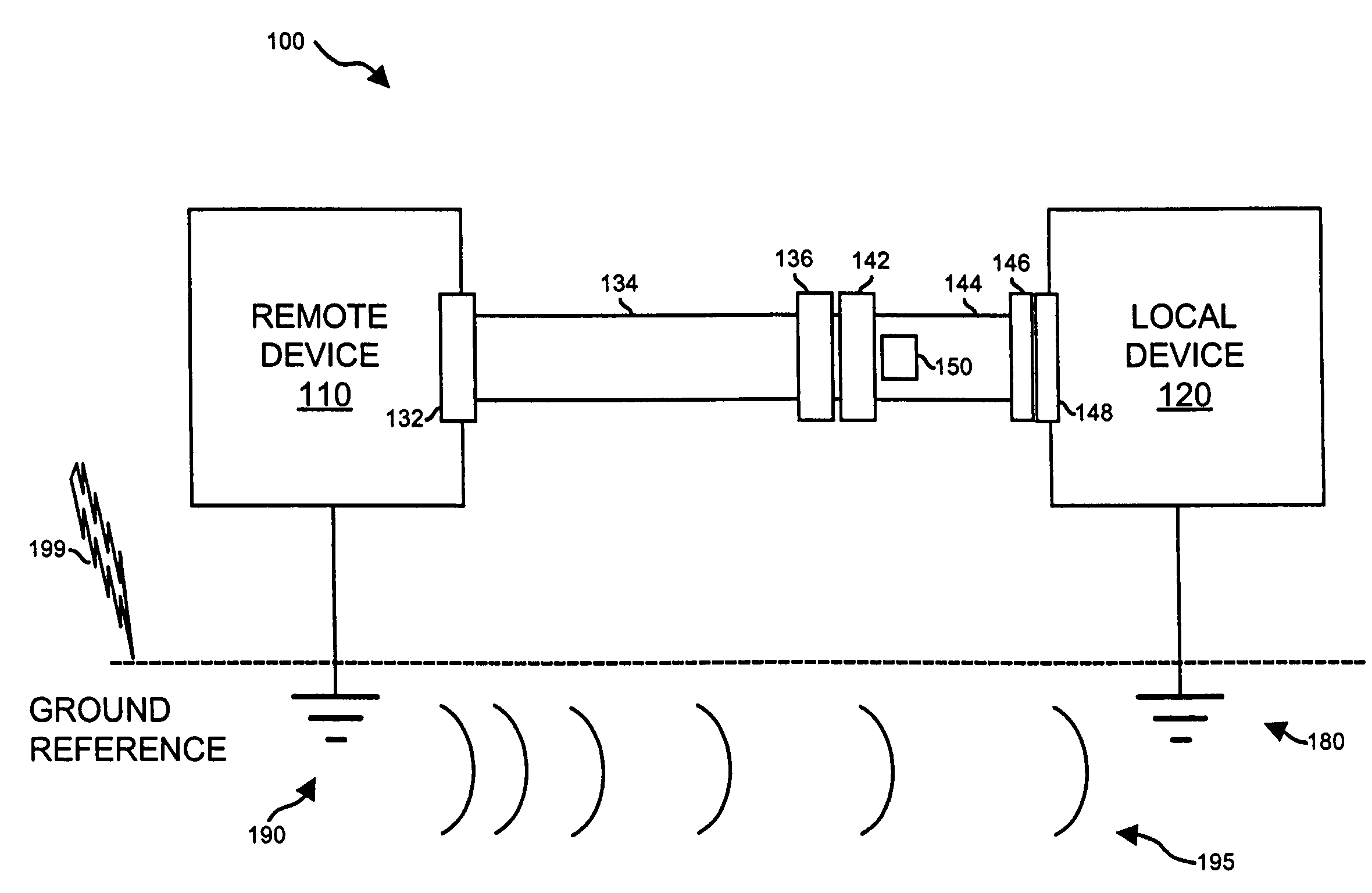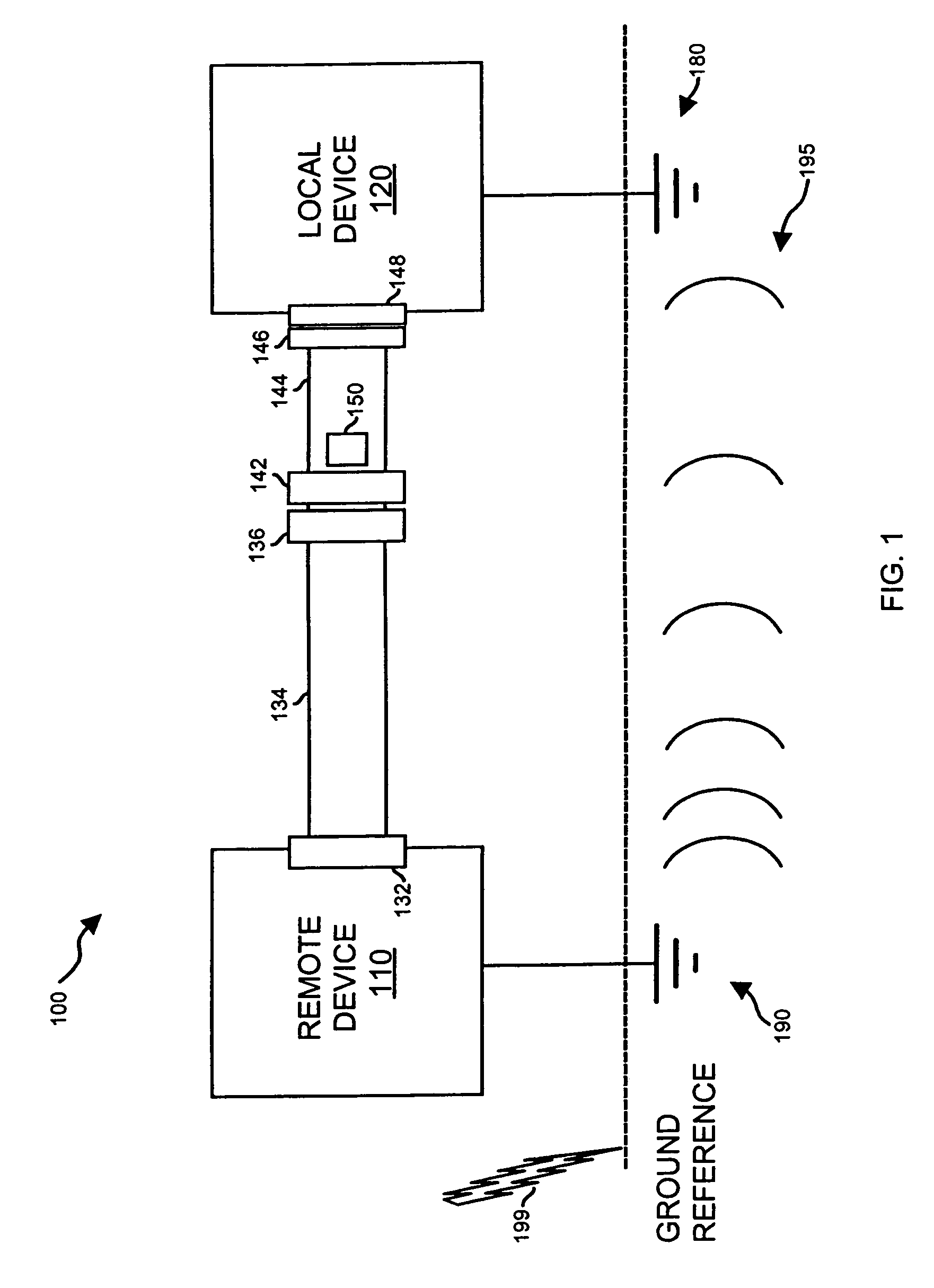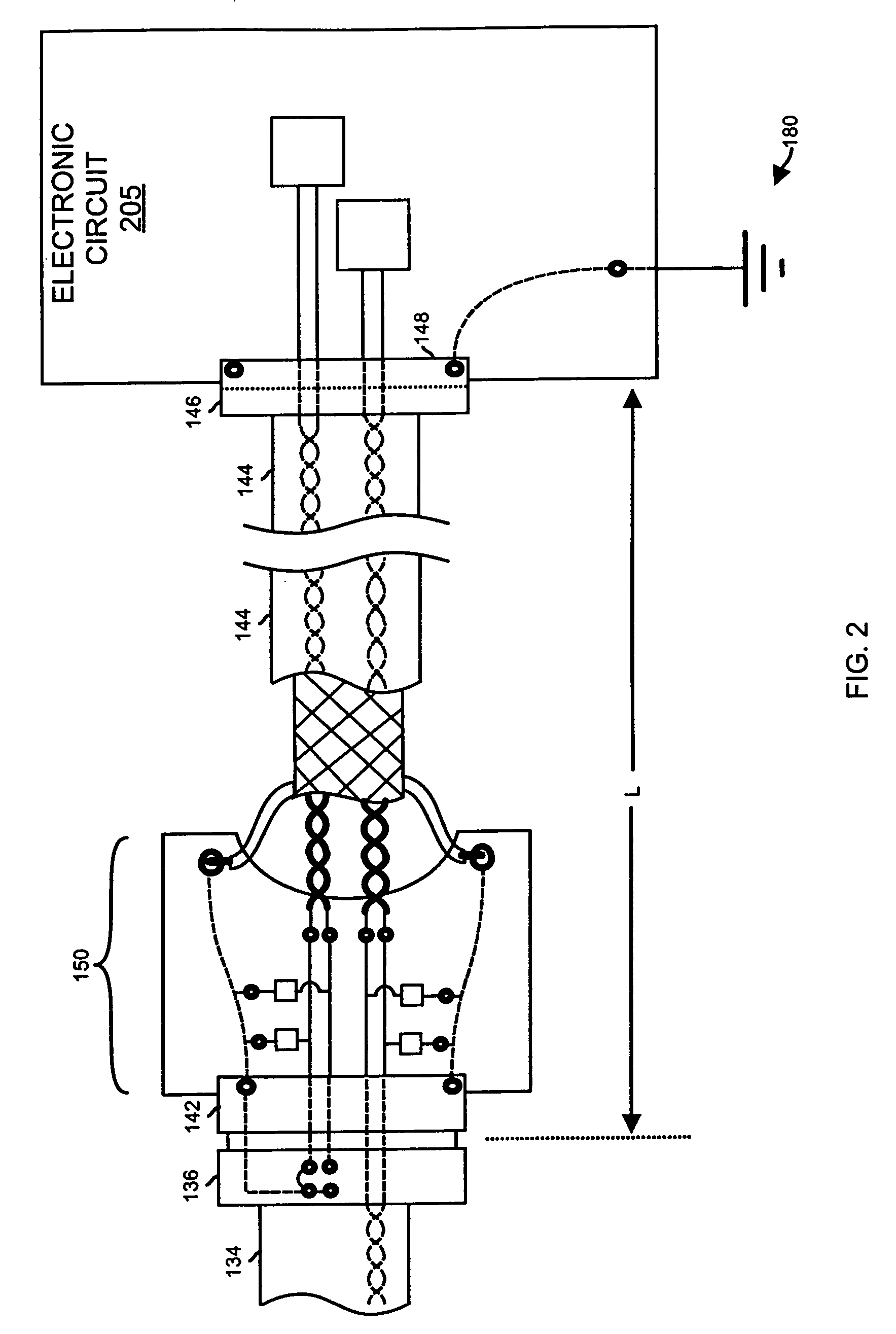Methods and apparatus to protect against voltage surges
a technology of voltage surge and protection method, applied in the direction of overvoltage protection resistor, emergency protective arrangement for limiting excess voltage/current, coupling device connection, etc., can solve the problem that the cable and/or its internal signals are susceptible to power or voltage surge, surges can be caused, and the electronic equipment is damaged a large amount every year
- Summary
- Abstract
- Description
- Claims
- Application Information
AI Technical Summary
Benefits of technology
Problems solved by technology
Method used
Image
Examples
Embodiment Construction
[0024]An embodiment of the present invention is directed towards a cable device integrated to include a (transient voltage) surge protection circuit. In the event that, communication signals conveyed by the cable include (damaging) transient voltages, the surge protection circuit integrated in the cable suppresses the transient voltages at a distance from a corresponding electronic circuit to which the cable is attached. For example, a conductor such as a cylindrical conductive shield associated with the cable provides a path between the surge protection circuit and a ground reference of the electronic circuit. When transient voltages are imparted on communication signals in the cable, the surge protection circuit clamps the voltage transients and current associated with the transient voltage travels on the conductor of the cable to the ground reference of the electronic circuit. Consequently, high voltage (and potentially damaging) transients imparted on the communication signals a...
PUM
 Login to View More
Login to View More Abstract
Description
Claims
Application Information
 Login to View More
Login to View More - R&D
- Intellectual Property
- Life Sciences
- Materials
- Tech Scout
- Unparalleled Data Quality
- Higher Quality Content
- 60% Fewer Hallucinations
Browse by: Latest US Patents, China's latest patents, Technical Efficacy Thesaurus, Application Domain, Technology Topic, Popular Technical Reports.
© 2025 PatSnap. All rights reserved.Legal|Privacy policy|Modern Slavery Act Transparency Statement|Sitemap|About US| Contact US: help@patsnap.com



